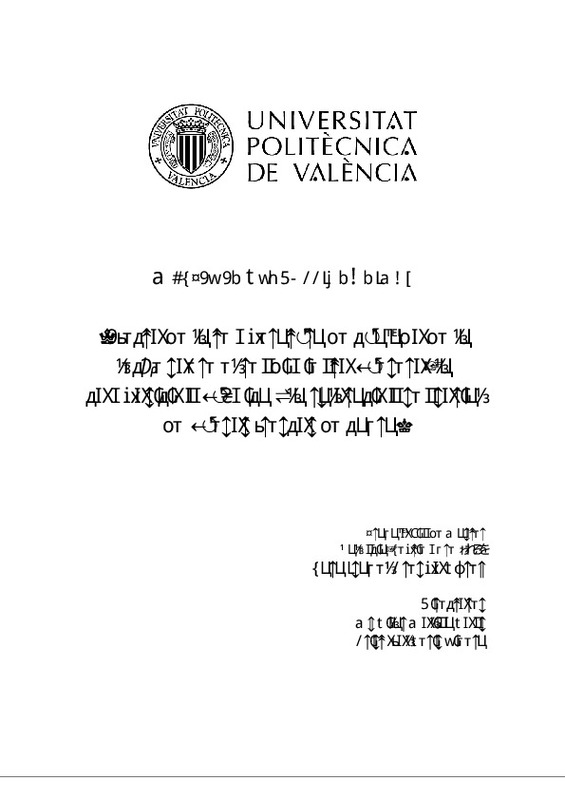JavaScript is disabled for your browser. Some features of this site may not work without it.
Buscar en RiuNet
Listar
Mi cuenta
Estadísticas
Ayuda RiuNet
Admin. UPV
Efecto de la temperatura de cuajado de la leche sobre el rendimiento quesero, la composición química y la valoración sensorial de quesos frescos de cabra
Mostrar el registro sencillo del ítem
Ficheros en el ítem
| dc.contributor.advisor | Molina Pons, Mª Pilar
|
es_ES |
| dc.contributor.advisor | Peris Ribera, Cristófol Josep
|
es_ES |
| dc.contributor.author | Crespo Pérez, Sara Isabel
|
es_ES |
| dc.date.accessioned | 2017-02-09T13:07:18Z | |
| dc.date.available | 2017-02-09T13:07:18Z | |
| dc.date.created | 2016-09-29 | |
| dc.date.issued | 2017-02-09 | es_ES |
| dc.identifier.uri | http://hdl.handle.net/10251/77788 | |
| dc.description.abstract | [EN] The cheese characteristics physico-chemical could be affected for different kind of factors related with raw material and the elaboration process. In this investigation, made at SAT Quesos la SABINA company, had been studied the temperature curled effect on the chemical composition of goat cheese, the cheese performance and the sense experience. To made this study, has been check two different temperature used normally I the factory, 32 ºC. I had made two different experiments, the first one controlling the temperature and comparing the usual temperature with a lower temperature (30 Cº) during 4 weeks and the second one comparing the usual temperature with a higher temperature (34 degrees) during 4 weeks also. I've been checking the cross milk, cheese and lactose serum composition. Also checked the pH from the begging till the end of the process including the serum, cheese and milk pH and measuring too the curled time, the temperature during the whole process. Also has been calculated the performance every single day and a sensory test of the cheese to check with cheese was the best for the consumers and why, with the propose to know if there was any sensory difference between the different elaborations kinds. The results showed that the only main difference was the fat content , the cheese made with a lower temperature (at 34 ºC) was related with the milk composition used to made the cheese. The sensory test didn't show any clear preference for the costumers because it was clearly influenced by the elaboration days, picked or chosen for the consumers the cheese more recently done. With all this data, I can concluded that the curled temperature between 30/34 ºC doesn't have any clear effect in the phyco-chemical and sensory on the fresh goat | es_ES |
| dc.description.abstract | [ES] Resumen: Se compararán dos temperaturas de cuajado de la leche (30ºC y 34ºC) con la temperatura control (32ºC) en el proceso de elaboración de los quesos frescos de cabra. Se registraran las siguientes variables: pH, composición y recuento de células somáticas de la leche, tiempo de corte de la cuajada, temperatura de calentamiento de la cuajada, rendimiento quesero y composición del suero y del queso obtenido (grasa, proteína y materia seca). | es_ES |
| dc.language | Español | es_ES |
| dc.publisher | Universitat Politècnica de València | es_ES |
| dc.rights | Reserva de todos los derechos | es_ES |
| dc.subject | Queso | es_ES |
| dc.subject | Cabra | es_ES |
| dc.subject | Temperatura de Cuajado | es_ES |
| dc.subject | Goat milk | es_ES |
| dc.subject | Fresh cheese | es_ES |
| dc.subject | Temperature | es_ES |
| dc.subject | Curdling | es_ES |
| dc.subject.classification | PRODUCCION ANIMAL | es_ES |
| dc.subject.other | Máster Universitario en Producción Animal-Màster Universitari en Producció Animal | es_ES |
| dc.title | Efecto de la temperatura de cuajado de la leche sobre el rendimiento quesero, la composición química y la valoración sensorial de quesos frescos de cabra | es_ES |
| dc.type | Tesis de máster | es_ES |
| dc.rights.accessRights | Abierto | es_ES |
| dc.contributor.affiliation | Universitat Politècnica de València. Departamento de Ciencia Animal - Departament de Ciència Animal | es_ES |
| dc.description.bibliographicCitation | Crespo Pérez, SI. (2016). Efecto de la temperatura de cuajado de la leche sobre el rendimiento quesero, la composición química y la valoración sensorial de quesos frescos de cabra. http://hdl.handle.net/10251/77788 | es_ES |
| dc.description.accrualMethod | TFGM | es_ES |
| dc.relation.pasarela | TFGM\46700 | es_ES |






